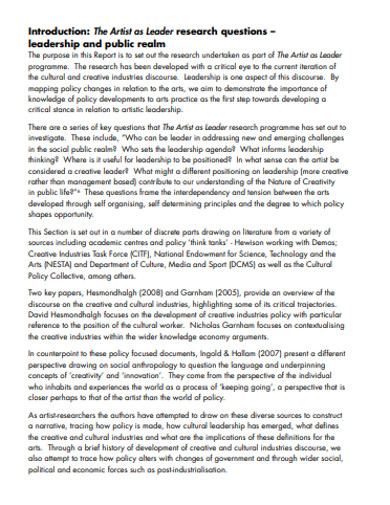Work of Art and Artwork
Some people use words they already understand may have a different meaning when used through a different perspective. In common usage, the terms’ artwork’ and ‘work of art’ are interchangeable. But in the world of art studies, they mean different things. ‘Artwork’ is the production and its outcome. This term refers to the performance, painting, drawing, poems, etc. ‘Work of art,’ on the other hand, is said to be the work that art does. Whatever movement in concepts, methodologies, material practice, sensorial and work experience, and other epiphanies that arise while making art is ‘work of art’ of art. Artistic research analyzes these two to report new knowledge.
10+ Artist Research Examples
There is no one correct meaning to art. There are untold truths hidden within the product and process of making art. It would have to take a non-traditional way of thinking to assess and analyze an artist’s performance and work. This is where artistic research comes in. To give you more insight on how artistic research is conducted, here are 10+ artistic research examples you can check out.
1. Artist Project Report Example
2. Artist Research Questions Worksheet Example
3. Famous Artist Research Example
4. Artist Research and Development Grant Budget Form
5. Interdisciplinary Artist Research Program Example
6. Simple Artist Research Example
7. Teaching Artist Research Example
8. Artist Research and Residency Program Example
9. Independent Artist Research Example
10. Artist Leader Research Example
11. Internet Artist Research Worksheet Example
Method to the Madness
Artistic research requires a firm understanding of art and its theories. You also need to have had an artistic experience that you can analyze in your study. This means that it requires a solid strategy to help accurately conduct it. As with any research, there are several different research methods researchers can utilize to accomplish their artistic research project. Below is a list of a few techniques you can choose from.
Action Research
After finishing the artwork, the artist or researcher looks to see if there is anything that needs improving. Action research focuses on analyzing the actions of the artist to help him grow and refine his work. Although there is no correct way of making art, researchers always assumed that it could be better. By using the action research method for your research project, you can formulate an effective improvement plan for your work.
Content Analysis
As discussed, art holds many various insights. Looking into every little detail of the artwork is called content analysis. Since art is used for infographics and marketing flyers, studying its content could help in understanding the whole document. Color schemes, figures, and movements could represent something more profound; that’s why researchers use content analysis to figure them out.
Critical Discourse Analysis
In the literary arts, what is said can mean something different. You need to be able to analyze the art history, figures of speech and positioning of the text. This type of data analysis is done with critical discourse analysis. This method studies social relations, knowledge, and identity, and how they are constructed in written text. Literary artistic research relies on this method more often than not.
Media Analysis
For those making formal essays in the art of film, plays, and television, media analysis might be the one you need. This analysis is a subset of content analysis that focuses mainly on mass media. This analyzes film transcripts and whatnot. Media analysis gathers and examines quantitative and qualitative data. This type of analysis studies and evaluates data from various kinds of media.
Usability Studies
Art often represents a particular scene, era, phenomenon, or demographic. Some also use visual and performing arts as tools to depict the behaviors of specified groups of people. This technique is why usability studies are one of the many methods of artistic research. This method looks at art as tools and reviews their uses for reasons lie lesson and study plan.
Behind every painted picture, every spoken poem, every song, and every dance lies the secrets of the universe. Not everyone can see it, but some are lucky enough to get a glimpse.













